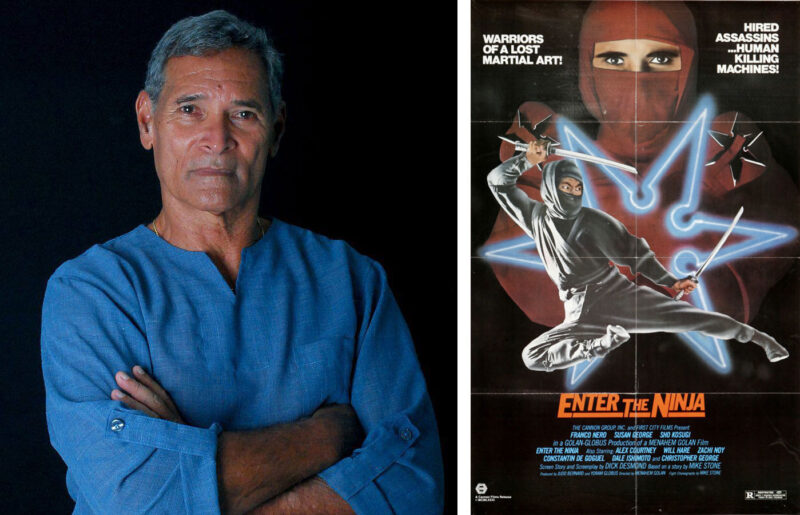
“Aloha friends, another beautiful day in paradise.”
It’s how Mike Stone begins every post on Facebook from his home in the Philippines, where he’s currently working with a writer on an extensive biography of his storied life and career(s). He’s wound up relatively close to where he helped make history shooting Enter the Ninja. However it was his upbringing in another paradise, Hawaii, I was curious about when the “godfather of ninja in the West” agreed to give us an hour to talk about growing up a jidai-geki fan, martial arts vs. movie arts, the fortuitousness of synchronicity in an insane film business, and yes… Franco Nero.
Vintage Ninja: Growing up in Hawaii, and the access you had to Japanese pop culture, movies, television — was that your first exposure to ninja?
Mike Stone: Yes, very much. I was always fascinated with the Japanese culture, all of my life. My closest friends were always Japanese, through elementary-school and high-school, and after with a lot of lasting relationships. My affinities towards the people, the language, the customs, the traditions, the attitudes, the discipline, the life principles — from a very early age, a lot of these things I recognized in the Japanese people around me. A lot of my energies went towards the Japanese people, the culture, the food…
I loved to go see Japanese films. I just loved the way they made films — the cinematography, I was already thinking about things like that. How did they get that shot, or why did they select that location and why did they choose to shoot it that way? I was already thinking along those lines.
When I was 11 years old, I saw a movie called Denko Karate Uchi [the 1956 debut of the legendary Ken Takakura] and that was my first Karate movie. I liked it so much that subconsciously it stuck in my mind — the flying kick that the hero did to vanquish his enemies — I really wanted to do that kick…
Toshiro Mifune was one of my first heroes as an actor, as a kid I really enjoyed the three-part life story of Miyamoto Musashi he did [Inagaki’s “Samurai Trilogy” — currently streaming from Criterion].
As for ninja… back then they were often featured as the enemy, as the bad guys in a lot of the samurai movies.
Later, when I started my school in California, 23-24 years old, I was still very much watching. I used to go to the Kokusai Theatre on Crenshaw Blvd. [south Los Angeles] and I would sometimes take 15-20 students to watch my hero at the time — Shintaro Katsu, portraying the blind swordsman.
I used to buy copies of the Zatoichi films and play them in slow motion to watch his footwork. This little chubby guy in those Japanese wooden shoes that were like three inches high and he’d be fighting on sand, on gravel, and when I would slow it down to see his footwork, he was absolutely amazing!
So that’s where I got a lot of my initial ideas.
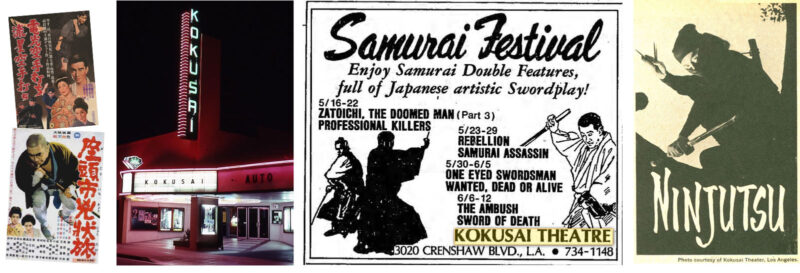
VN: A lot of martial artists, when transitioning to the screen, have to unlearn what they’ve accomplished in their careers and almost learn a new style for the movie/TV set. Did being such a film fan aid that?
MS: Cinematically, my mind had already adjusted, from an early age, of watching martial arts type movement and choreography and a lot of it had seeped into my mind, my unconscious thinking, and allowed me to draw upon those earlier images at will when I was in that environment as a fight choreographer or as a martial artist. So it wasn’t an unlearning and re-learning, but simply a transition, taking with me all of the things I had already learned.
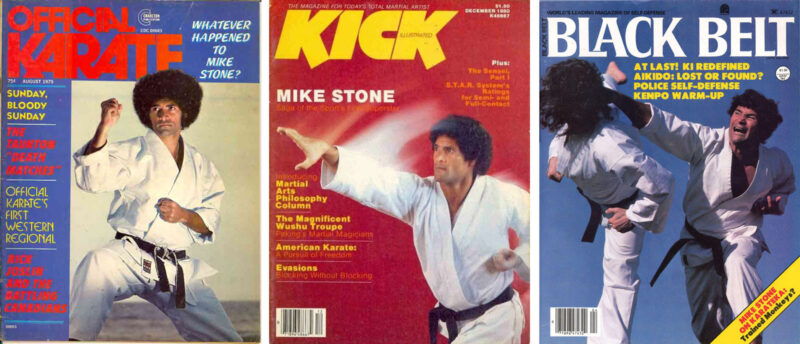
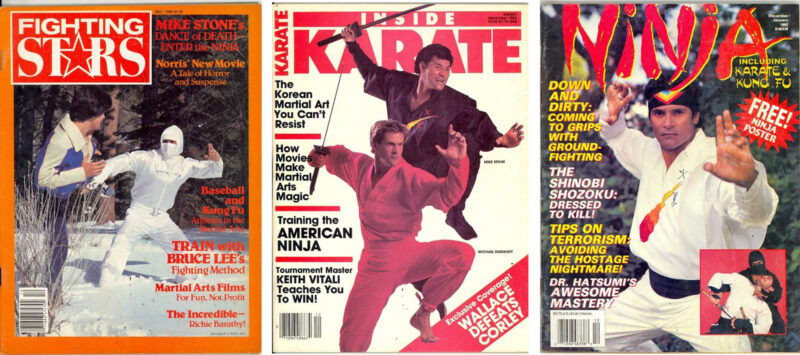
I didn’t really have a single style — even though I started in Okinawan karate — my footwork came from boxing, I played a lot of different sports my entire life, even just playing I loved to play in the jungle and run up and down rocks and mountains so I had to be stutter-stepping uphill and downhill. So my whole fighting style wasn’t a system, it was really who I was, my personality, my mindset.
VN: So the precursor to Enter the Ninja — “Dance of Death” — was something you developed for television as was reported back in the day?
MS: No, “Dance of Death” was always meant to be a movie. I came up with that name — and I’ll actually tell this for the first time — during a personal conversation I had way back with Ed Parker. When I first came to California, I worked at one of his head schools in Pasadena. My first student was a brown belt by the name of Danny Inosanto. Ed Parker taught me one of his Kenpo ‘Short Forms’ — a kata. To me, that kata was a ‘dance of death.’
Then there was a guy who wrote a book, Eric Van Lustbader, The Ninja, and I read that book and I loved it. To me, if they had settled whatever disputes they had about money, which is what it always is about, and did that movie the way he had written the book, I mean, it would have been an amazing movie. I think I have a relatively vivid imagination and creativity, so when I was reading it I could just picture a lot of the ideas he had written in the book.
[See VN’s extensive write up on the scripts and doomed fate of The Ninja here.]
That’s also when I first met Stephen Hayes. He and I became close friends and still are today. I introduced him to Black Belt Magazine, and that started him writing all these ninja books. I also introduced Stephen to Cannon, to Menahem Golan. They used him to write, but later decided not to use it…
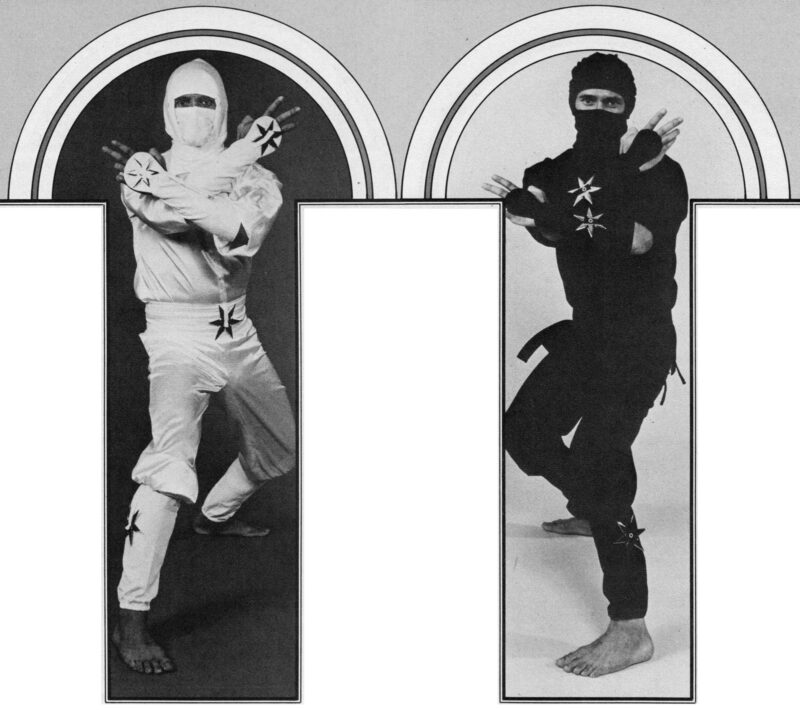
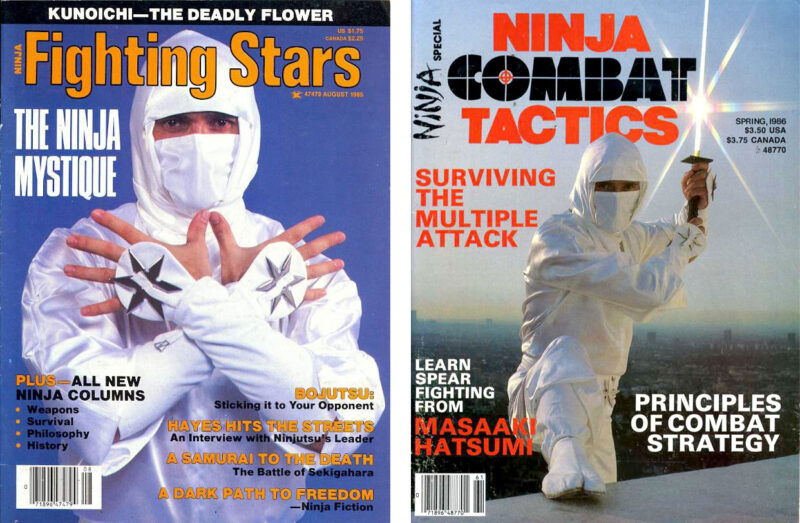
VN: So when did “Dance of Death” become “Enter the Ninja?”
MS: The transition was during the pre-production stage. They wanted the same thing as Enter the Dragon and this was a totally new concept so they wanted “Enter… the Ninja.”
VN: How close was “Dance of Death” to what we saw on screen as Enter the Ninja?
MS: The characters were the same, but their actions and behaviors changed. I had more specific action scenes planned but the limited martial arts abilities of the actors changed those plans a lot. I did wish they would have allowed me more freedom in showing action fights, and use of more and different weapons.
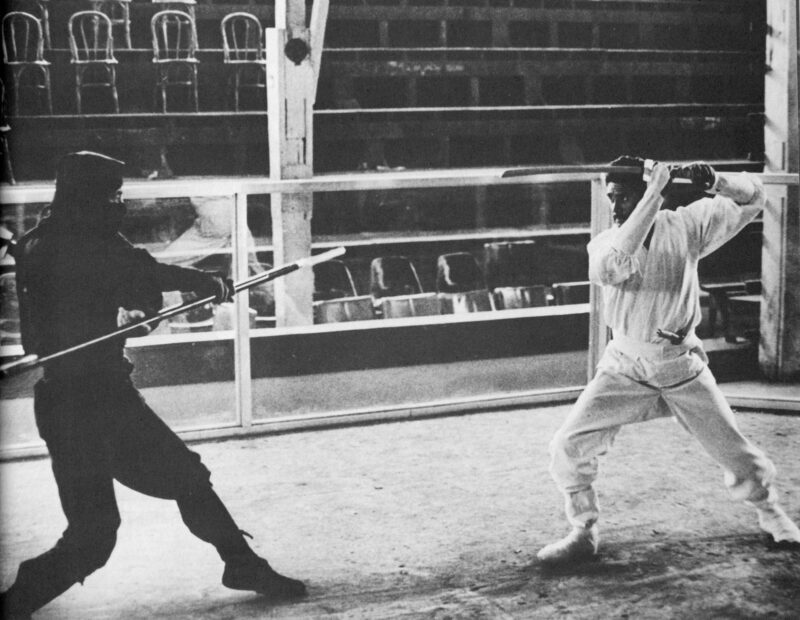
VN: Indulge me here… Back in the early 80s, there was an urban legend so-to-speak — perpetuated by certain magazines and ‘telephoned’ into a giant fish-tale of lore — that Mike Stone had shot the entirety of Enter the Ninja only to have all his acting scenes replaced by Franco Nero behind his back, and he didn’t even know it until he was sitting in a theater seeing it. I have, ever since that time, dreamed of asking you about that nonsense…
MS: I’d like to tell you the whole story… this is the truth. I have a particular belief system — it’s called synchronicity— and I understand why it happened this way.
When I first approached Cannon with it, and this was what I call a complete synchronicitous event, I was across the street on Sunset Blvd., I think 3535 Sunset was where they had their three-story building with “Cannon” across the top. I don’t know why I was there, with my script in my hand, but I look up and say ‘Oh! Cannon Films!’ so I go across the street when the light changes, I find them on the glass board in the lobby and I go up.
It’s lunch time. I have no plans. I don’t know anybody there. My brain is on automatic pilot.
A lady at the front desk approached me and said Can I help you?
Yes, I’m here to see somebody about a script.
Do you have an appointment?
Yes, I do…
Do you remember with who?
No… I forgot the name… uhhh
She asks me my name, I answer “Mike Stone.”
Then I hear Mike Stone? The real Mike Stone? Have him come in!
Now, what I couldn’t see, sitting off to the side about twenty feet away, at her desk having a lox and bagel sandwich is a lady I don’t know, and I said I want to apologize for lying about having an appointment…
No, no… I know who you are! she said, her name was Priscilla McDonald, I take Karate from one of Joe Lewis’s Hawaiian instructors, Gordon Doversola and your picture is all over the school. So how can I help you?
Well, I just have this script that I think will be the next big craze in action films. It’s about this ninja thing… and I explain a little bit.
She says You know I’m flying to meet my boss at the Canadian Film Festival, his name is Menahem Golan, I can’t guarantee you anything, in fact… and she got up from the desk, walked me to a closet, and from floor to ceiling is nothing but scripts. Scripts everywhere!
I asked if they had read them all and she said Of course not… but I’ll read yours on the flight up and if I think it’s OK I’ll submit it to him.
In about three weeks, as I’m leaving my apartment in North Hollywood, I turned on my answering machine and as I close and lock the door I hear the phone ringing, and through the door I hear Hi Mike, this is Priscilla McDonald, and Menahem Golan would like to have a meeting with you— and I nearly broke the door down to get to the phone before she hung up.
So when I went to Cannon, this was the thing… she had already told [Golan] a little bit about my reputation and who I was and that I had written the script. Now this is just my understanding based on the events that transpired — when I first met him, he walked me through the office as if I was his next big star in martial arts. All the way down it was come here, this is Mike Stone, he’s going to be our next star, going to make the ninja!
His cousin, Yoram Globus, was waiting for us at the far end of the building for this meeting, and he introduced me as the next star of this big movie that I had written and had expertise in.
He was just blowing smoke up my butt.
Cannon already had a three-picture contract with Franco Nero.
I’m a nobody, never acted before, but I had the expertise and knowledge and the ability to pull off all of the things that they liked in the script. So they did a fake, phony, bullshit screen test, then we were sent to the Philippines to find other stunt people, to train martial artists. I took five people with me — Bob Jones, Jack Turner, Doug Ivan, Alan Amiel and Sho Kosugi. But they had already gotten Franco Nero to come to California while we were away shooting in the Philippines.
This was already a plan they had to get me out of it somehow. They made an excuse that Mike is difficult to work with, he’s very arrogant, he’s hard, he’s stubborn… they made all these reasons and they fired me. But then immediately said would you be willing to stay on and help us with the choreography?
I didn’t have any hurt feelings about not being the star, because actually I only wanted to be behind the camera, I wanted to do the choreography, I wanted to create that. That was seriously my interest, I had no interest in becoming a star. But they wanted to create some controversy as to why they hired and fired me as lead actor so they said whatever they said…
But if my ego was so big I couldn’t work with anybody, why turn around and give me a higher salary as both fight choreographer and stunt coordinator than I would have got as an actor? I understand the movie industry, it’s all about money. They have an existing contract they have to fulfill. They have a new concept, a property, a product that’s very intriguing. They have the guy who created it and has the ability to pull it off.
It was my baby. I was heavily involved since the beginning, and I never left the project. I was in every part of the movie except the talking…
VN: That last fight scene is really the first ninja-vs-ninja duel in the West, what was that arena?
MS: It was for cockfighting. It’s very very big in the Philippines, that was a big arena in Manilla.
VN: And it gave you the ‘human cockfighting’ metaphor. Was that a long shoot in there?
MS: No, between me and Sho, we got the duel done in just a couple days. We really knew what we were doing…
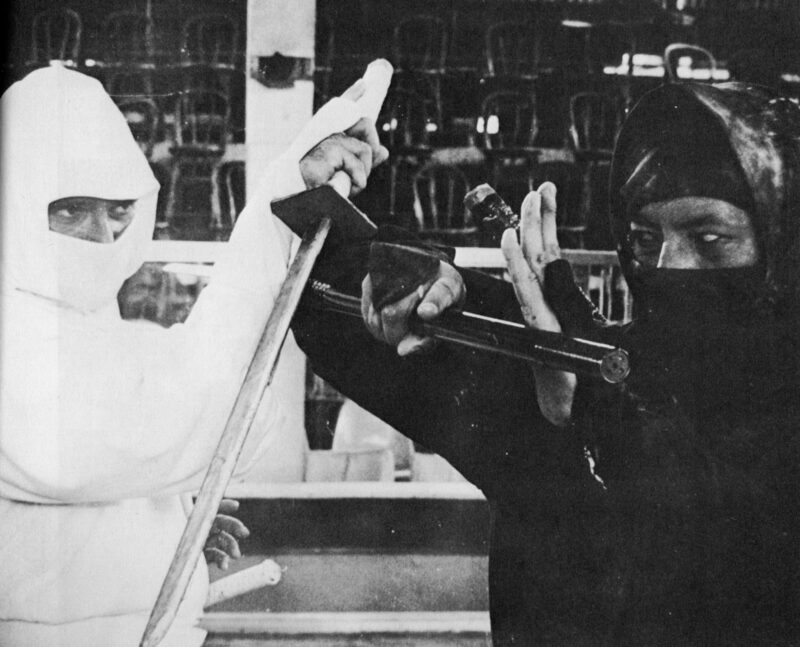
VN: How did Sho Kosugi come into the project?
MS: I got Sho involved, but he wasn’t the first choice. I originally approached Tadashi Yamashita for the role, but he turned it down because he wanted to be the star. So I needed a Japanese guy and I had worked with Kosugi at shows with Doug Ivan and Fumio Demura. Sho was already very good with working with weapons, taking instruction, and he was a young, strong guy. He immediately jumped at the opportunity.
VN: Apart from your original crew, were the other stuntmen and fighters local recruits?
MS: Yes, we went a month early to recruit stuntmen, gymnasts, martial artists, we had auditions. It was unbelievable the amount of people who showed up. We’d say to the crowd OK, everybody who can climb walls, go to the left! and the whole arena shifted to the left. Only people that do kicks, go to the right! The whole arena shifts to the right. Who can jump off that? I can jump off that, I’m used to climbing coconut trees! OK, can you do a backflip off that? SURE! and they’d just do it! The Filipinos were so gifted physically.
VN: A few years later, you worked on the set of a movie that was largely lost for decades, The Last Ninja.
MS: I almost forgot about that… (chuckling) you do so many movies, TV shows, pilots… but that was a fun project. A guy named Frank Orsatti, one of the originators of Stunts Unlimited, a legend, he had hired me on a couple projects that were martial arts things that he didn’t know anything about, so he’d hire me for my knowledge and expertise, not only as a martial artist, but as a fight choreographer and actual practitioner. So I added value to his stunt team.
Last Ninja was just fun to work on. It has this guy Michael Beck, and Mako played his master. I was a ninja in some of the darker fight scenes, when the people took over the building I was the one sneaking around wiping people out.
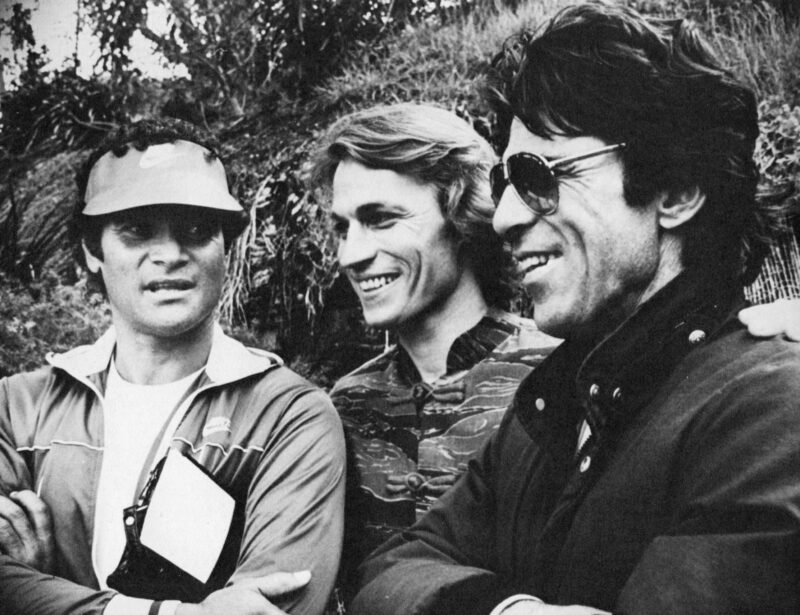
VN: Was keeping the violence ‘TV-friendly’ a challenge?
MS: Yes, because you’re using weapons it can be, BUT, part of my thinking is if I want to make something appear violent then I don’t show the violence. Especially with the ninja concept, since they’re mysterious assassins, then you really won’t see the damage that they’re causing. You’ll see the effects of it. You’ll see somebody lying down in a pool of blood, but you don’t need the violence that caused it. That separation allows the viewer to use their own imagination to say Holy shit, what happened!?!?… you want that wow-factor. The creativity is showing the result of the action.
VN: It’s difficult to imagine now, especially for younger folks, that the word “ninja” was largely unknown before the 1980s, but just a few short years into that decade and ninja in one form or another were inescapable. Were you surprised at how quickly things exploded?
MS: No, not at all. I was not surprised because I believed in it already for so long.
I already knew several years before that this was the concept. In fact when I had done interviews for Fighting Stars or Black Belt or Inside Kung-Fu, I would always say I think I have an idea for the next trend for martial arts. Then they’d ask what it is, but I didn’t want to say specifically so I’d say it’s kind of like this and like that, and not really be showing my hand, when it was a couple years before I knew where I really wanted to go with it. Someone once told me try to keep your golden dreams close to your heart…
I knew the ninja craze would catch on because it’s very mysterious, not talked about, it has espionage, secrecy, stealth. It’s using weapons. It’s a different mindset — that people could dislocate their own arm or cut off their own leg in order to get over a wall and not be captured — a degree of discipline and focus and personal integrity they had.
I fully believed if people just had an opportunity to see this, that this would be the next level of entertainment.
So for Enter the Ninja, it was simply just expressing a passion I had. I had no prior experience. But it had to start somewhere, so for the ninja concept, I think… maybe… I can be credited with being the “godfather” or “grandfather” of ninja for the Western market, because Enter the Ninja was the first Western-produced specifically ninja film ever made.
And then it just went crazy…

Crazy indeed. Little itty bitty Cannon’s Enter the Ninja, sprung from the passion of a non-movie-industry guy with no experience, would subvert the efforts of 20th Century Fox (responsible for Star Wars) and directors like Irvin Kirshner (responsible for The Empire Strikes Back) to bring Lustbader’s novel to the screen and break “ninja” in mainstream pop culture. Cannon’s aggressive and agile nature 100% determined the future of the 80s worldwide boom — some seeing this as taking ninja into the exploitation gutter for good, others realizing that the grindhouse may have been a better home than the fickle mainstream. It’s a bigger discussion for another time…
Inspired by Stone’s model of ‘being the ninja guy on set’ Sho Kosugi would set himself up as the center of the follow-up Revenge of the Ninja, but that ascension did not last long as the very next film, Ninja III: The Domination, saw him largely sidelined in favor of aerobics and exorcisms and he’d leave Cannon right after. Stone would end up behind the camera again for the American Ninja series and Tadashi Yamashita finally in front of the lens as the unforgettable Black Star Ninja.
Would the ninja boom have happened if Stone and Cannon hadn’t hooked-up? Possibly. There’s an alternate universe where John Carpenter just used a modern shinobi as a stand-in for Michael Meyers in his Halloween-esque treatment of Lustbader’s The Ninja. However, Fox clearly wasn’t super comfortable putting mainstream money into niche martial arts stuff, so I’m a firm believer the genre was never going to be big studio A-list business.
Debate aside, I know this for sure… the work Stone did on that first titular film — conceiving of the ninja as the central hero, realizing the value of a ninja-vs-ninja duel, hell, just the work he did on the credit sequence alone, was enough to ‘lightning bolt’ the ninja idiom into this teenager’s heart and soul and I, like you, never looked back.
Thank you Mike Stone.
Keith J. Rainville — June, 2021
READ MORE:
The entire 1981 Cannon Films Press Kit for Enter the Ninja can be seen and read here.
We celebrated the film in 2012 upon its initial DVD and streaming releases here.
The Credits That Launched A Craze
A close-up look at some of the crudely made prop weapons before ninja gear was widely available.
French promo stills here and even more here.
Yugoslavian lobby stills differed a bit from most other marketing packages.
We were deliriously happy when The Last Ninja finally surfaced in a legit release!
